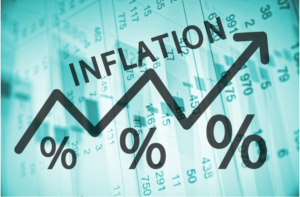Det amerikanske aktiemarked befinder sig i en “vent-og-se”-periode, og en enorm mængde fri kapital tyder på en vis frygt for en ny nedtur. Men Merrill vurderer, at det er starten på et nyt bull market, selv om der er risici, såsom en forværret amerikansk-kinesisk handelskrig. Men hvis risiciene kan holdes i ro, er der udsigt til et stigende aktiemarked i løbet af 2021.
Uddrag fra Merrill:
Going from “Wait and Watch” Stage to a “Path Forward” Stage
The S&P 500 has rallied an impressive 33% from its March 23 lows, getting further
away from its 50% retracement level of 2,792 and its long-term secular support of
2,688.
While some investors are justifiably concerned about the historically painful
economic data and the uncertain path of the virus, we would argue that a new equity bull
market looks to be underway.
A bull market typically begins with a “Gasp for Air” stage, characterized by a strong
rally off oversold levels, sparked by policy makers starting to panic, incrementally less
damaging news flow and covering of excessive short positions.

U.S. equities appear to be in the “Wait and Watch” stage, which will potentially last into
the third quarter, then followed by a “Path Forward” stage—dependent on the success
of economic re-openings and ultimately vaccines and treatment.
Seeing that the S&P 500 index is currently trading at a 20x P/E, above the historical
average of roughly 16x, some investors have been pointing to expensive equity valuations
as reason for caution.
However, we would argue that in the post-virus world, a higher valuation multiple for
the S&P 500 may be the new normal. A gradual recovery in the consumer and services
sectors, should keep inflation and interest rates at low levels, often considered a good
position for multiples. Concurrently, the Federal Reserve’s (Fed’s) policy interest rates
is seen to remain at or near zero-bound long after the recovery takes hold, translating
into easier financial conditions and less uncertainty, helping to support higher multiples.
In addition, the scarcity of assets that offer a combination of Quality, Yield and Growth
should be able to enhance the attractiveness of U.S. large caps on a structural basis.
Finally, the S&P 500 index of today seems to be more exposed to secular industries,
which arguably seeks to help the market to see through near-term economic weakness.
For example, the weight of secular growth sectors like Technology, Communication
Services and Healthcare today is 50% of the index versus 30% back in 2005.
What do we think the market is pricing in?
This is a common query by investors during the “Wait and Watch” stage and is not precisely
answered amid the wide dispersion in data, with both bulls and bears in the analyst
community and media having enough ammunition.
In our view, the S&P 500 has absorbed the rescue dose of Fed liquidity and fiscal stimulus and has transitioned its focus from economic shutdowns to the beginning of economic re-openings, but the post-virus corporate earnings and consumer pent-up demand acceleration slated potentially for 2021 may yet to be priced in.
Meanwhile, the possibility of a second wave of infections, negative headlines and rising
U.S./China tensions may be the risks equities still have to contend with and therefore will
keep the market in a wide trading range during this stage.
In our view the likelihood of a retest of the March market lows has declined, given the
unprecedented monetary and fiscal stimulus measures and investor sentiment remaining
bearish, even as this “don’t fight the Fed” rally has kept going.
Bearish sentiment appears to have hit a high so far for the year, according to the well-followed survey by American Association of Individual Investors, suggesting that investors are more bearish now near 3000 levels for the S&P 500 than they were near 2200 levels in March. Meanwhile, cash held in money market funds has reached $4.8 trillion, according to BofA Global Research, surpassing the 2008 financial crisis highs of $3.9 trillion, which shows a lack of enthusiasm for this rally.
Getting to A Path Forward
History suggests that some bear markets are due to structural economic pressures, and
some are cyclical downturns, while others are caused by unforeseen exogenous shocks.
The depth and speed of the decline and subsequent time to recovery vary, with the root
cause ultimately determining the potential path forward.
CONCLUSION
We are keeping an eye on key investment risks especially as re-openings gather pace.
Those risks would include a re-escalation of U.S./China tensions and the second-order
effects of this recession, including corporate bankruptcies, the timeline for small
businesses to recover, and behavioral changes regarding consumer spending post-virus.
If these risks remain reasonably contained against the backdrop of improving economic
activity and stimulus measures, then markets should continue to climb the wall of worry
from a 12- to 18-month perspective in our view.










